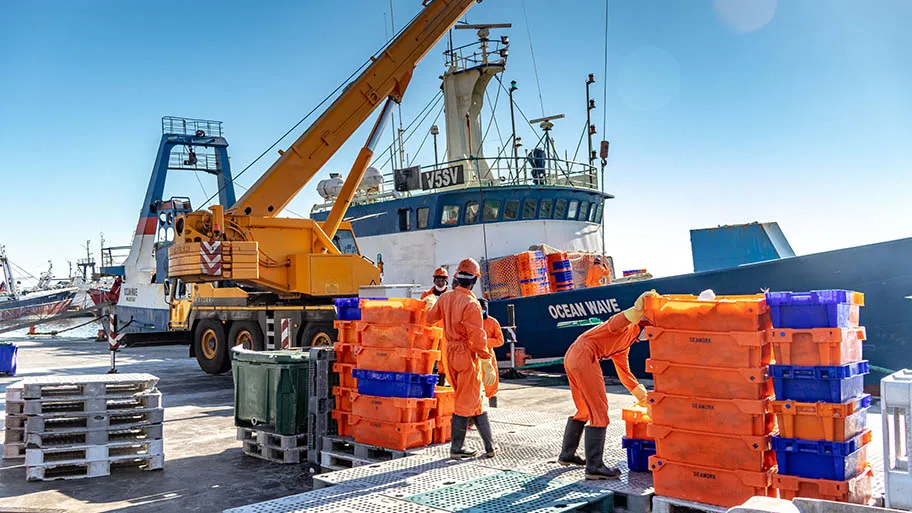
Namibia’s Ocean & Coastal Fishing and Aquaculture Industry: A Comprehensive 2025 Outlook
The Namibian ocean and coastal fishing and aquaculture industry is a crucial sector for the country’s economy, providing employment, foreign exchange earnings, and food security. The 2025 industry report, published by ResearchAndMarkets.com, offers a detailed analysis of Namibia’s fishing sector, covering wild-capture fishing, aquaculture, recreational fishing, and fish processing.
The report highlights Namibia’s position as Africa’s second-largest exporter of seafood, the key challenges it faces, and the industry’s future outlook. Notably, Namibia’s fishing industry has been affected by a high-profile corruption scandal, Namibia’s environmental concerns, and pressures on fish stocks due to overfishing. However, growing demand for MSC-certified Namibian Cape hake, increased interest in commercial seaweed and kelp cultivation, and the expansion of aquaculture activities are creating new opportunities for growth and investment.
Namibia’s Fishing Industry: Market Overview
Namibia’s fisheries sector has long been a cornerstone of its economy, contributing significantly to employment, GDP, and foreign exchange earnings. The country’s exclusive economic zone (EEZ) along the Atlantic Ocean provides a rich marine environment, making it one of Africa’s most valuable fisheries.

Key Highlights:
- Namibia is Africa’s second-largest exporter of fish and seafood.
- The industry plays a critical role in food security and employment.
- Recent years have seen reputational damage due to corruption scandals.
- The government is pushing for sustainable marine resource management.
- The aquaculture sector is gaining traction, particularly in oyster, abalone, and tilapia farming.
- Increased interest in commercial seaweed and kelp farming for global markets.
Despite its importance, Namibia’s fishing industry faces significant challenges, including overfishing, quota reductions, environmental threats from mining and oil exploration, and climate change impacts.
Challenges Facing the Industry
1. Quota Reductions and Declining Wild-Capture Volumes
Namibia’s wild-capture fisheries are under pressure, with the government implementing quota reductions to combat overfishing and allow for resource replenishment. Key species affected include:
- Cape hake, a major export to the EU.
- Namibian horse mackerel, a staple for many southern African markets.
- Sardines, which have seen severe stock depletion over the years.
Fishing companies are finding ways to offset lower quotas by targeting higher-value markets and optimizing operations.
2. Environmental and Sustainability Concerns
Namibia is facing severe environmental challenges that could impact fisheries:
- Climate change is leading to rising ocean temperatures and changing fish migration patterns.
- Pollution, including chemical spills, oil leaks, and untreated sewage, threatens marine life.
- Illegal, unreported, and unregulated (IUU) fishing by foreign vessels remains a persistent problem.
- Marine phosphate mining proposals raise concerns over potential damage to marine ecosystems.
To counteract these challenges, the government and industry players are focusing on sustainable fishing practices and promoting the use of Marine Stewardship Council (MSC) certifications to maintain market confidence.
3. Geopolitical and Economic Factors
Namibia’s fishing industry operates within a complex global economic environment. Some key factors include:
- Geopolitical security risks affecting global trade.
- Namibia’s dependence on EU markets, particularly Spain, for Cape hake exports.
- The push for stronger intra-African trade agreements.
- Potential BRICS collaboration opportunities for seafood exports.
Opportunities for Growth
1. Expansion of Aquaculture
With wild-capture fisheries facing quotas and declining stocks, aquaculture presents a promising solution. Namibia’s oyster and abalone farming industries are expected to expand significantly, especially with:
- Certification for key markets, opening doors for premium exports.
- Interest in freshwater fish farming, particularly tilapia.
- Investment in mariculture, fostering sustainable offshore fish farming.
2. Rising Demand for MSC-Certified Cape Hake
The global market is seeing increased demand for MSC-certified seafood, particularly from EU countries such as Spain. Namibia’s Cape hake industry is well-positioned to benefit from this trend, provided sustainability measures are upheld.
3. Commercial Seaweed and Kelp Farming
There is growing interest in commercial seaweed and kelp farming, particularly for:
- Nutritional supplements and pharmaceuticals.
- Cosmetic and skincare products.
- Biofuel and sustainable packaging alternatives.
Namibia’s cold, nutrient-rich waters make it an ideal location for large-scale seaweed cultivation, attracting investment in this emerging sector.
4. Technology Integration in Fishing Operations
Innovative fishing technologies are revolutionizing the industry. Opportunities exist in:
- AI-driven monitoring systems to track fish stocks.
- GPS and sonar navigation to optimize fishing routes.
- Drones and acoustic cameras for efficient fish stock assessments.
- Fishing planning apps offering real-time weather, tide, and fish movement updates.
Industry Players
Several key companies dominate Namibia’s fishing and aquaculture industry. Notable players include:
Major Fishing Companies
- NovaNam Holdings (subsidiary of Spain’s Nueva Pescanova Group)
- Oceana Group (South Africa)
- National Fishing Corporation of Namibia (Fishcor) (State-owned)
- Tunacor Fisheries Ltd
- Etosha Fishing Corporation
- Erongo Marine Enterprises
Aquaculture and Emerging Players
- Hangana Abalone (Pty) Ltd
- Nam Oyster Farm Cc
- Kelp Blue Dawn Aquaculture (Pioneering seaweed farming in Namibia)
- Oceangrown Aquaculture (Pty) Ltd
These companies play a vital role in shaping the future of Namibia’s fishing industry, balancing economic growth with sustainability efforts.
Future Outlook
Despite challenges such as corruption, overfishing, and environmental threats, the Namibian fishing industry remains resilient and poised for growth. Key takeaways for 2025 and beyond include:
- Strengthening sustainable fishing practices to maintain MSC certifications and secure premium export markets.
- Expanding aquaculture initiatives, particularly in oysters, abalone, and tilapia farming.
- Investing in marine technology, AI-driven monitoring, and smart fishing systems.
- Exploring commercial seaweed and kelp farming as a new revenue stream.
- Fostering intra-African trade and seeking new international partnerships.
By addressing its challenges and capitalizing on emerging opportunities, Namibia’s fishing and aquaculture sector can continue to thrive as a key economic driver, ensuring long-term sustainability and profitability for stakeholders.


